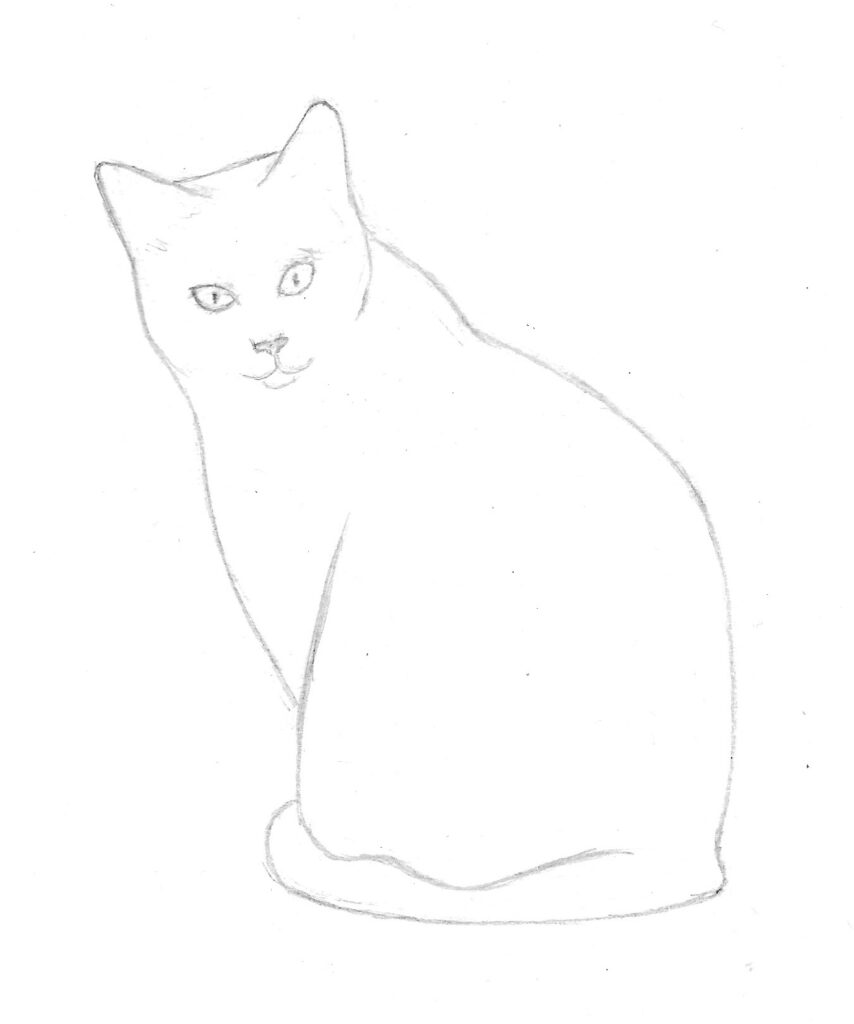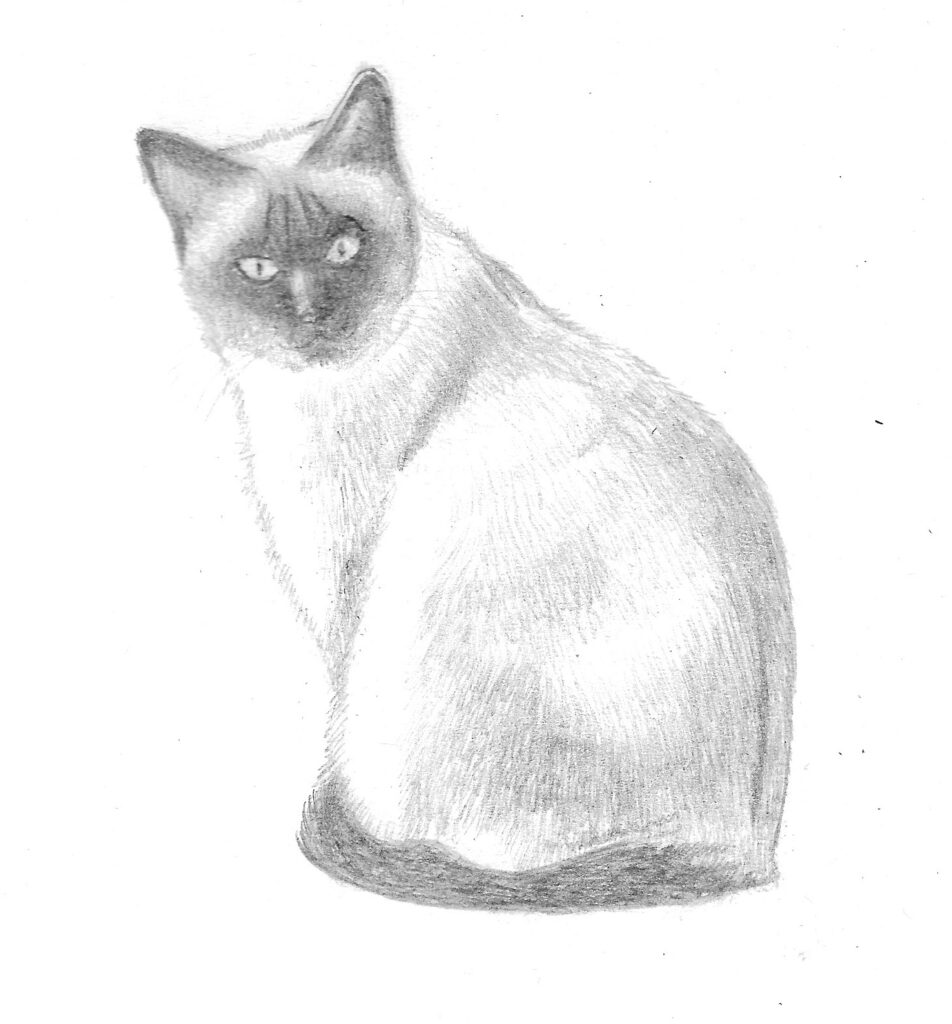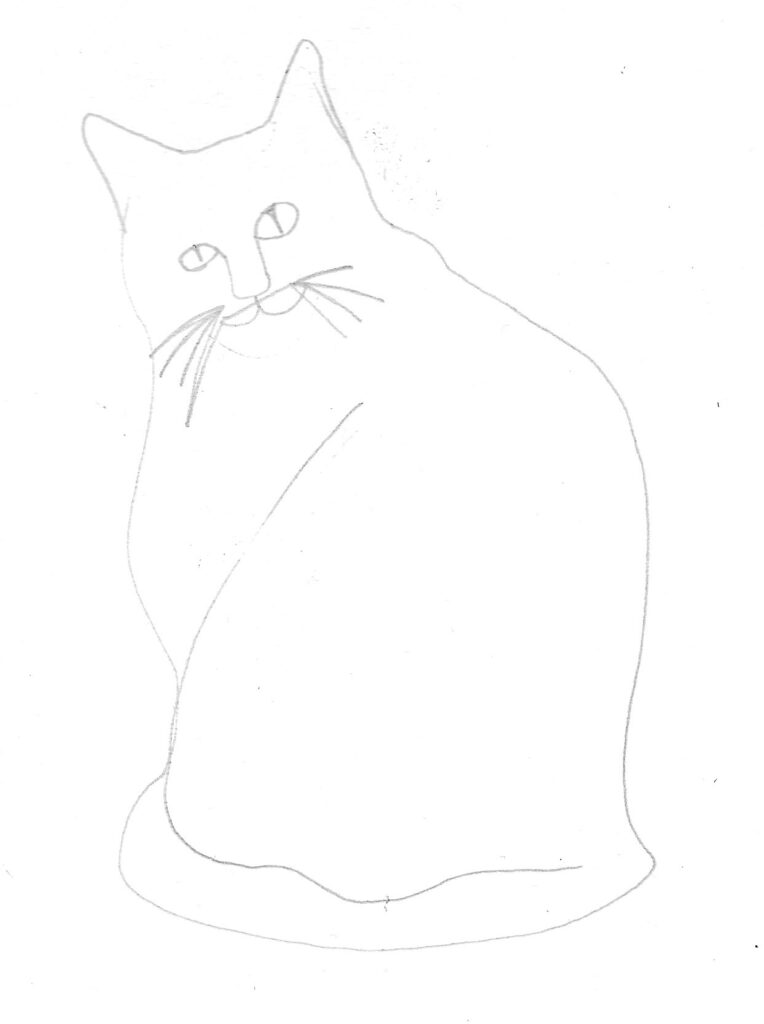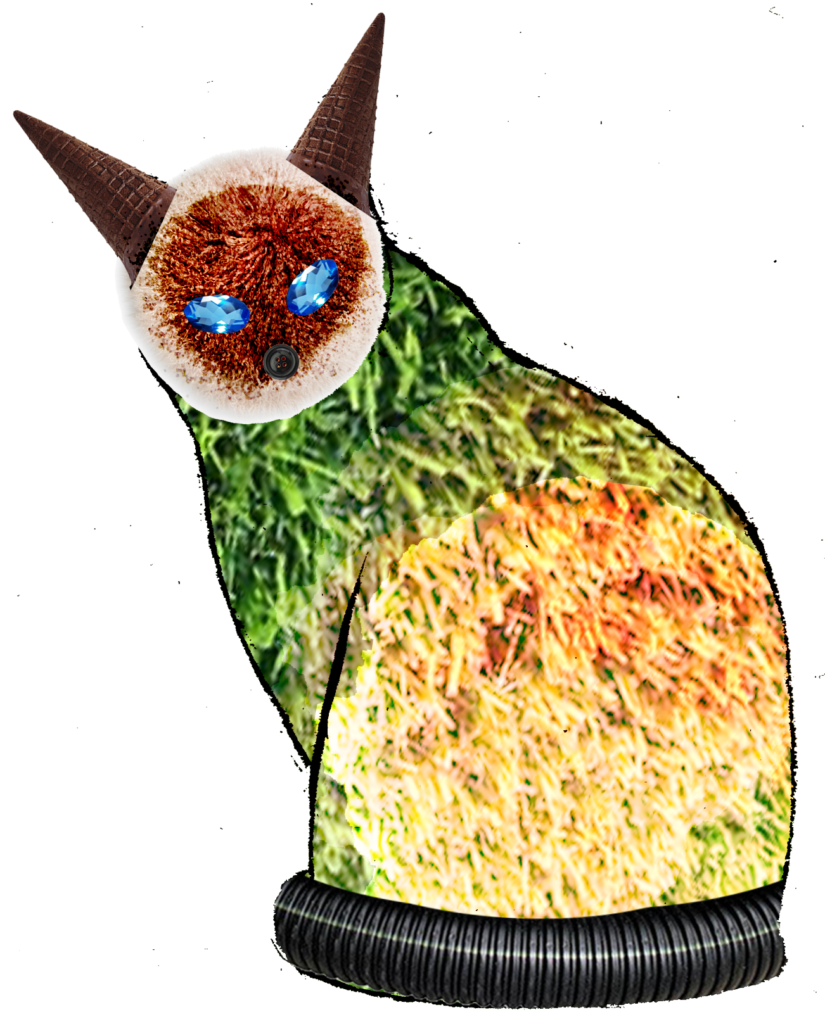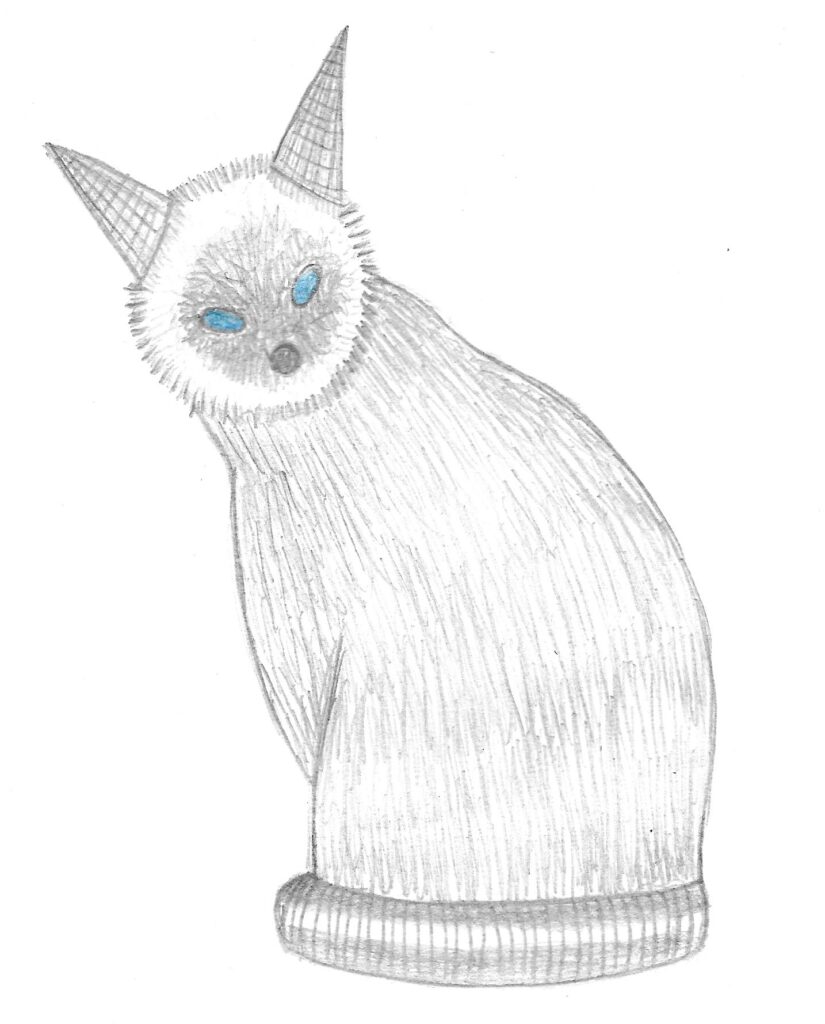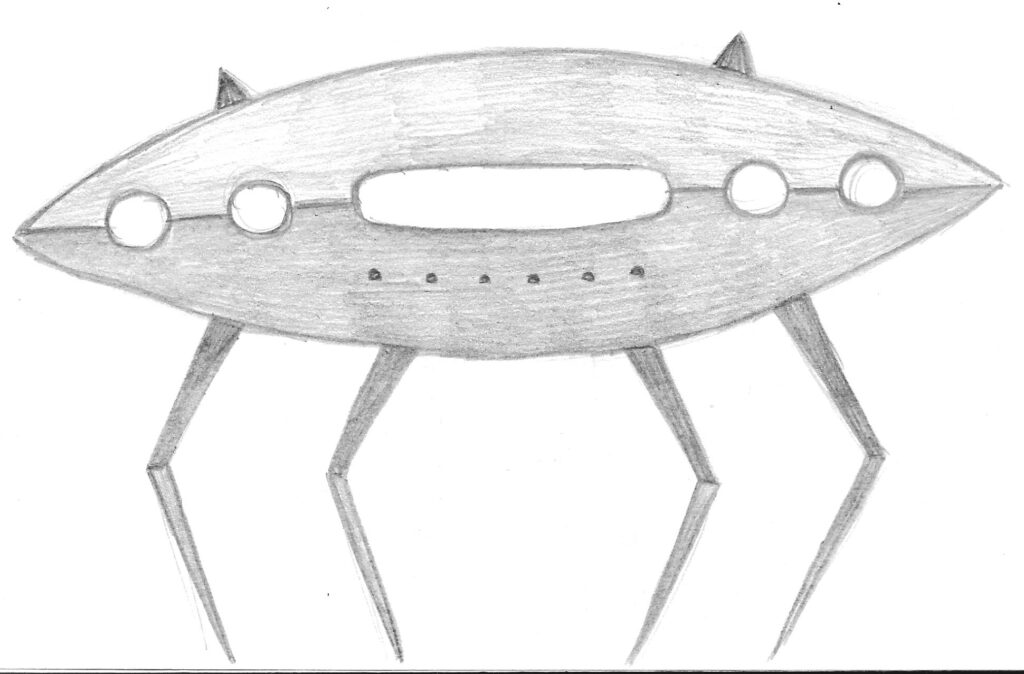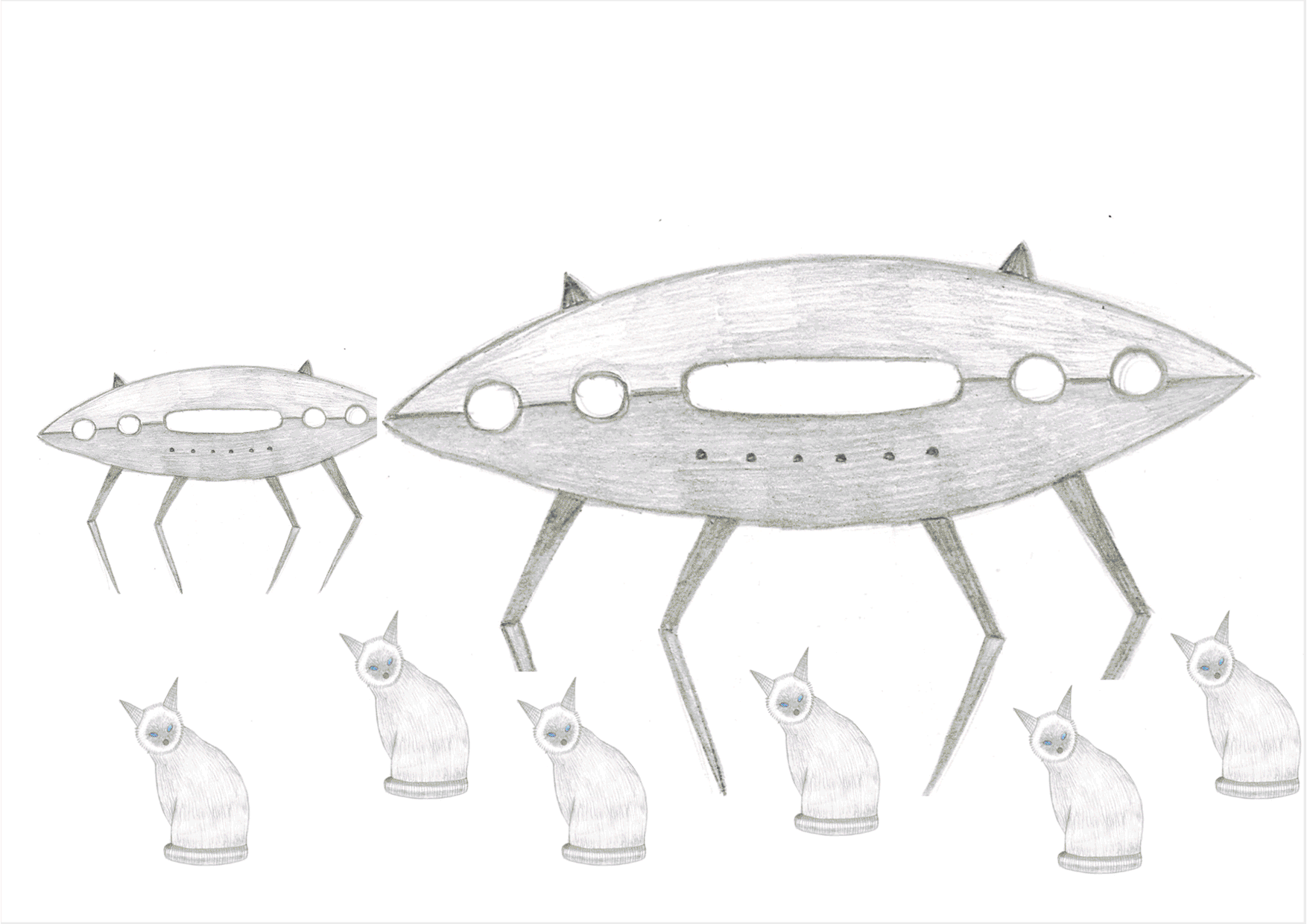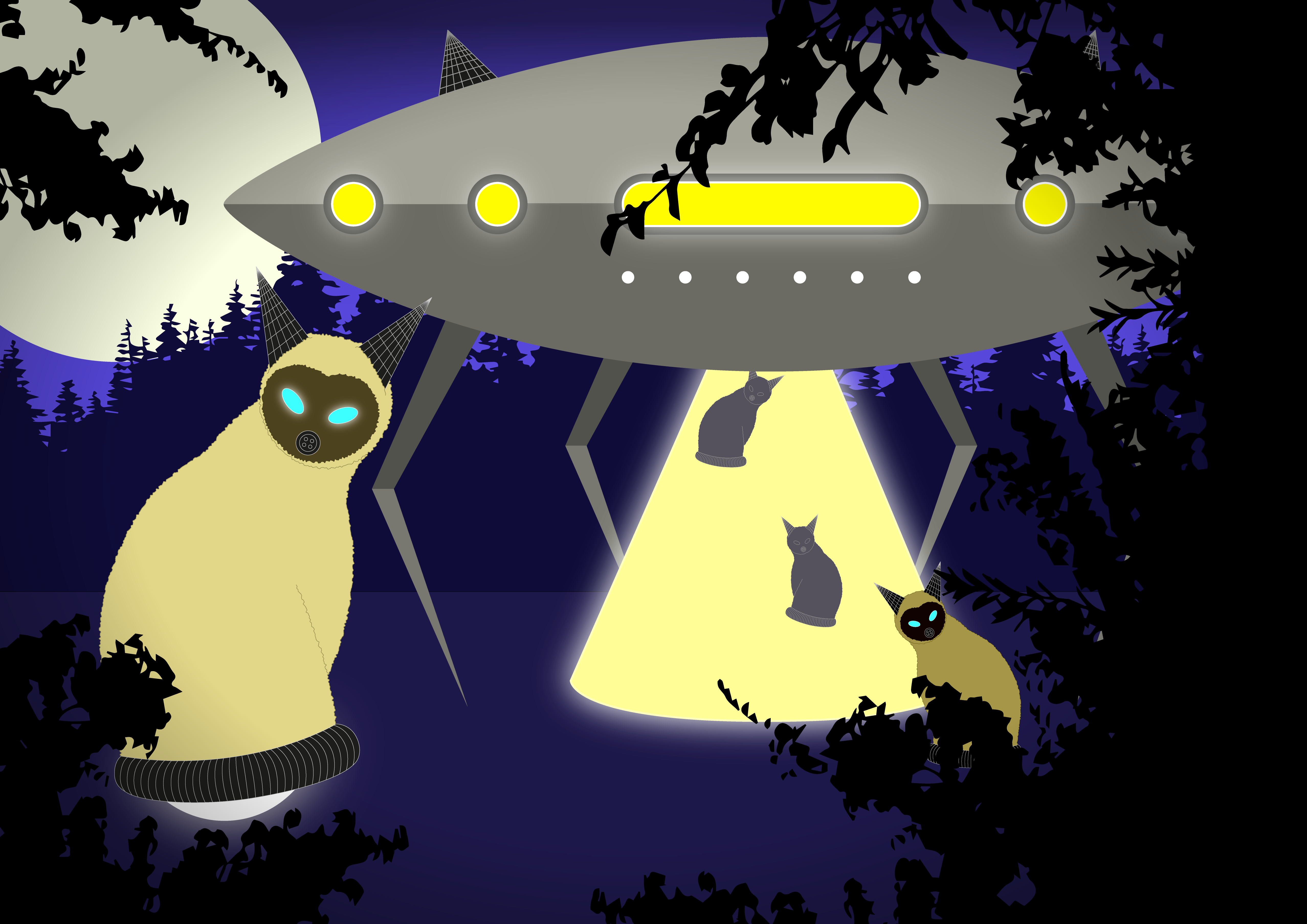Brief
This exercise is designed to push you through a deliberate process of stylisation. Tackle it with an open mind and be prepared to adapt or adopt some of the approaches you discover.
Begin by drawing a cat or dog. Using reference from any source – life, photos or images from internet. Draw the animal in a way that makes it ‘real’. Remember to describe some aspect of its appearance or personality.
Do a second drawing using no more than five lines. These lines can join up with each other and overlap or can be less connected; they can be straight or fluid.
Now make a collage from bits cut from magazines and printouts. Let the texture of a tree be the fur for example. Have fun introducing surreal elements. Deliberately distort. How far can you bend reality?
Produce a drawn version (not a tracing) of your collage. When drawing, edit and select from the collage being aware of the properties you want to create a strong character. Review the distorted version and decide how you can refine the image.
This image can now be incorporated into a bigger image. Use your imagination and introduce at least one other element that introduces a narrative. Be creative but consistent in the development and rendering of this additional content.
Part 1: Drawing of a Cat or Dog
I decided to draw a cat for this exercise. I searched for reference images and, after plenty of deliberation, selected my final choice (see below). I liked the intensity of this cat’s eyes and how it is so neatly tucked into itself. I also like the enigma of cats, whereby you are never completely sure of what they are thinking or their intent.
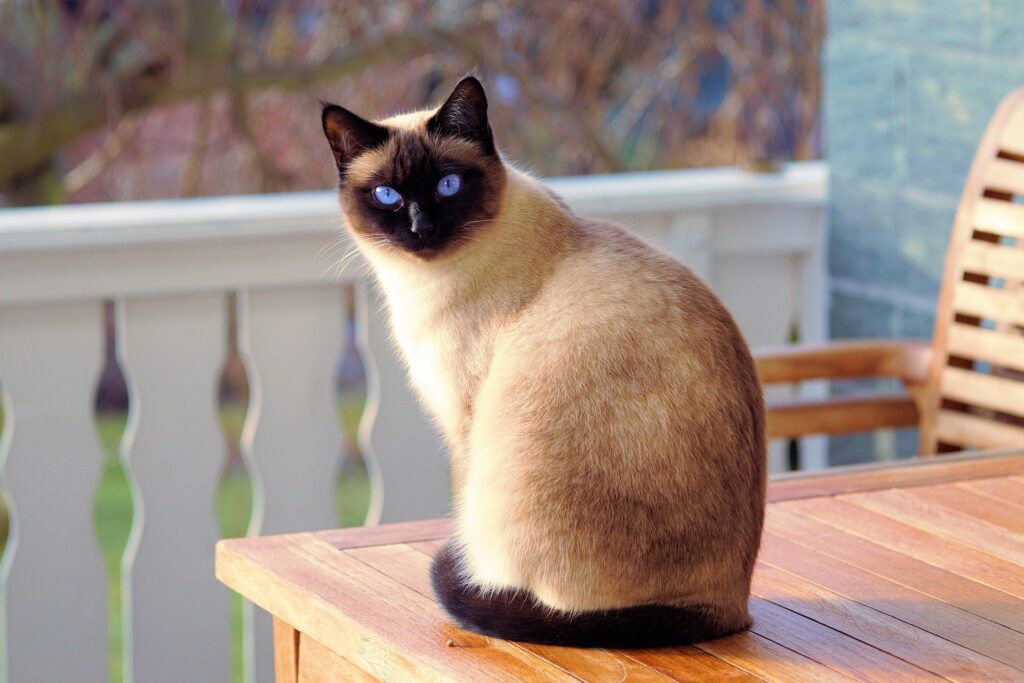
For research, I looked at Edouard Manet’s pencil drawings of cats. Although I did not attempt the same style, I found it fascinating how such lifelike images were created by applying ‘rough’ pencil strokes. I would assume they were done from life and therefore likely that haste would have been needed to capture the position before the cat (knowingly!) moved.
I started by drawing the outline of the cat.
I then moved on to building on this outline, with the final version as below.
I was quite pleased with the result as I have been trying to fit in daily drawing practice and I think this is having a positive impact.
Part 2: Line Drawing of Cat
For research of this part of the exercise, I looked at Picasso’s line drawings, which really demonstrated to me how complicated objects can be simplified down to simple lines (even one single line!) yet still be recognisable.
I decided to not think too much about this part of the exercise as I felt that would inhibit the outcome. I managed to use just five lines.
I was pleasantly surprised with the result, I was expected it to be really quite bad, but I think my drawing has a certain character to it.
Part 3: Surreal Collage of Cat
For this part of the exercise, I looked at various artists that have used collage/photomontage to create surreal artwork. The ones I found to be most relevant to this exercise (in terms of how they had used the materials) were:
- Eileen Agar
- Lou Beach
- Michael Engelmann
- Richard Hamilton
- Peter Kennard
- Herbert Leupin
- Linder
- Francis Picabia
- Klaus Staeck
- Joe Webb
I also found some examples of cat collages/photomontages on the Saatchi website, along with a few examples on Pinterest. However, none of these really appealed to me in terms of inspiration.
I was not looking forward to this part of the exercise and I felt this preconception inhibited my attempt.
I spent a long time trying to convince myself that the collage did not need to be a realistic representation of the cat, but I found it very difficult. I also thought that it would have been better to have chosen a different ‘pose’ for this part.
Drawn Version of Collage Cat
I was slightly deflated by the time I got to this part of the exercise, but tried my best to create a reasonable drawn version of the collage, focusing on the elements I thought worked best. I felt the result made the cat look like a combination of a devil and an alien.
Final Image
By the time I got to the final part of the exercise, I really did not have any idea what to do with the image I had come up with previously. I was not sure whether I was required to stick to a pencil drawing for the final piece or not.
After some consideration, I decided to go with my impression of the cat now resembling an alien. I began to have a vague idea of the direction I was going to take. I sketched out a rough UFO.
I then scanned both the cat and the UFO into Illustrator and began to build up my chosen composition.
I really just went with the flow when designing this final image, trying to make the composition as balanced and visually interesting as possible.
Final Thoughts
I found this exercise much more challenging and time-consuming than I had expected. I enjoyed the initial sketching parts, but found the collage part a real struggle to be enthusiastic about – I have never been particularly keen on this medium. This in turn made the remaining parts of the exercise quite difficult.
Therefore, I was quite impressed how I managed to come up with a reasonable final piece for the exercise. I felt it could definitely benefit from more refinements (especially when seen up close), but as a concept and composition, I thought it was fairly successful.
As a result of this outcome, it proved the point that it is worth pursuing new ways of working as they can spark ideas that may otherwise not have come to fruition. When starting this exercise I had no inclination where it would end up or if it would be a decent outcome.
References
Bruckman, C (2019). 12 Picasso Line Drawings – Famous Pencil Sketches and Tattoos. [online] DoItBeforeMe. Available at: https://doitbeforeme.com/picasso-line-drawing/ [Accessed 16 December 2020].
Joe Webb ART, (n.d.). Joe Web ART – Collages. [online] Joe Webb ART. Available at: https://www.joewebbart.com [Accessed 17 December 2020].
Lou Beach Art, (n.d.). Collages – Lou Beach Art. [online] Lou Beach Art. available at: https://loubeachart.com/collages/ [Accessed 17 December 2020].
MoMA, (n.d.). Michael Engelmann. [online] MoMA. Available at: https://www.moma.org/artists/1732#works [Accessed 17 December 2020].
MoMA, (n.d.). Herbert Leupin. [online] MoMA. Available at: https://www.moma.org/artists/3503#works [Accessed 17 December 2020].
MoMA, (n.d.). Klaus Staeck. [online] MoMA. Available at: https://www.moma.org/artists/8268#works [Accessed 17 December 2020].
Saatchi Art, (n.d.). Cat Collages for Sale. [online] Available at: https://www.saatchiart.com/collage/cats?hitsPerPage=100&page=1 [Accessed 17 December 2020].
Tate, (n.d.). Eileen Agar 1899-1991. [online] Tate. Available at: https://www.tate.org.uk/art/artists/eileen-agar-633 [Accessed 17 December 2020].
Tate, (n.d.). Linder born 1954. [online] Tate. Available at: https://www.tate.org.uk/art/artists/linder-10844 [Accessed 17 December 2020].
Tate, (n.d.). Richard Hamilton 1922-2011. [online] Tate. Available at: https://www.tate.org.uk/art/artists/richard-hamilton-1244 [Accessed 17 December 2020].
The Metropolitan Museum of Art, (n.d.). Edouard, Manet. A Cat Curled Up, Sleeping. [online] The Metropolitan Museum of Art. Available at: https://www.metmuseum.org/art/collection/search/334638 [Accessed 15 December 2020].
The Metropolitan Museum of Art, (n.d.). Edouard, Manet. Cat Resting on All Fours, Seen From Behind. [online] The Metropolitan Museum of Art. Available at: https://www.metmuseum.org/art/collection/search/334639 [Accessed 15 December 2020].
